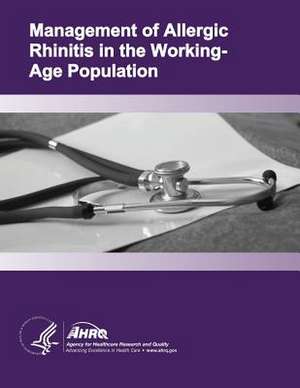Management of Allergic Rhinitis in the Working-Age Population
Autor U. S. Department of Heal Human Services, Agency for Healthcare Resea And Qualityen Limba Engleză Paperback
Preț: 196.06 lei
Preț vechi: 206.38 lei
-5% Nou
Puncte Express: 294
Preț estimativ în valută:
37.52€ • 40.74$ • 31.52£
37.52€ • 40.74$ • 31.52£
Carte disponibilă
Livrare economică 01-15 aprilie
Preluare comenzi: 021 569.72.76
Specificații
ISBN-13: 9781499671506
ISBN-10: 1499671504
Pagini: 384
Dimensiuni: 216 x 279 x 20 mm
Greutate: 0.89 kg
Editura: CREATESPACE
ISBN-10: 1499671504
Pagini: 384
Dimensiuni: 216 x 279 x 20 mm
Greutate: 0.89 kg
Editura: CREATESPACE
